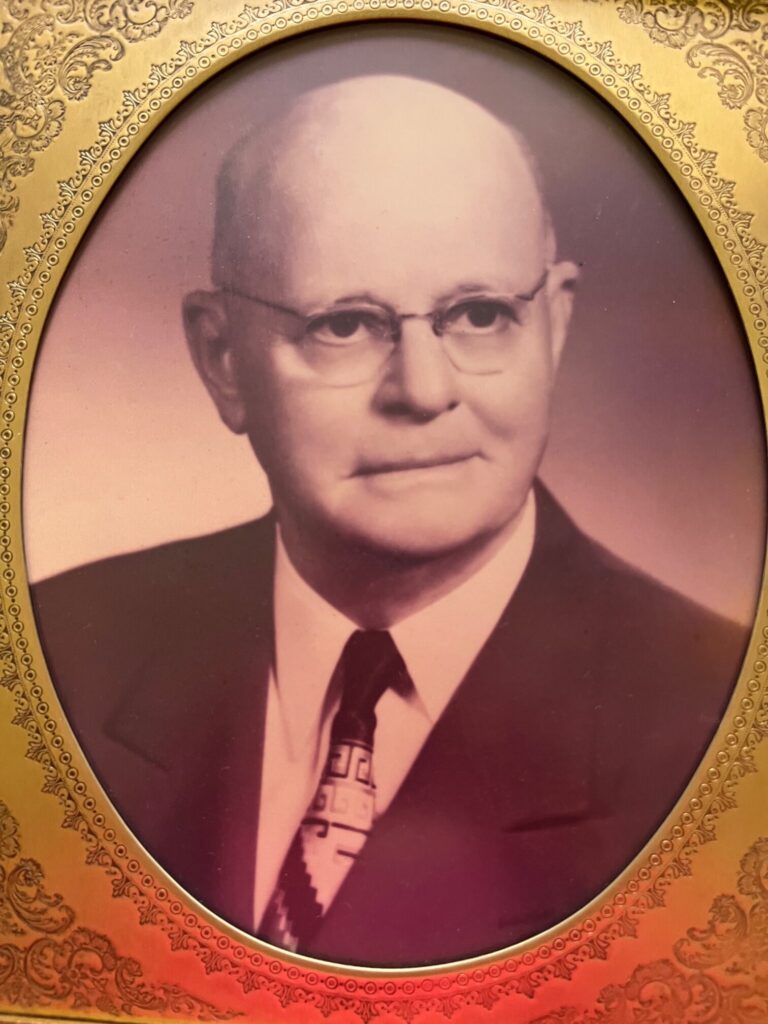1)Arthur Leland Slade 2) Mims Mobley, Sr.
3) H. Wiley Turner Jr. and Gladys Lyon Turner
The Advertiser is publishing a series (3 articles) on some of the local entrepreneurs who emerged in the 1950s as South Carolina, the South and the Nation as a whole was recovering from World War II of the decade before. Edgefield County, in particular, rebounded from the Depression as the War ended (September 2, 1945) and the County began to see some prosperity as it emerged from the Great Depression years and the aftermath.
During these years the Central Savannah River Area (CSRA) became an organized entity to which Edgefield County belonged and drew benefits from its association; and what was happening in the CSRA was the building of the “Bomb Plant” – an early, local term for it – and known eventually as the Savannah River Plant. New housing had to be built in Aiken, Edgefield and surrounding counties to accommodate the building crews that swept into the area to create the structures for SRP. Many of these workers came into the County with their families. As the structures were built and the work of the Plant got underway, this area saw an influx of highly educated and trained people moving in. The number of Masters Degrees and Ph.D.s grew, especially in the Aiken area where they chose to live.
SRP opened the door for more jobs for people after the War, and certainly Edgefield County provided its share of workers as the Plant got underway, and it has continued to furnish workers.
Another big project after the War that did not bring great growth to the County, predicted and hoped for by some, was the building of the Clarks Hill Dam (now re-named and recognized by the Federal Government as Strom Thurmond Dam), well underway in the late 40s (started August 1, 1946) and the large concrete dam was completed in 1954.
These two big projects, along with a growing economy after WW ll, seemed to give energy to the local businesses, for most of the store-fronts in Edgefield were filled with clothing stores, a radio shop, a bakery or two, a TV shop, furniture stores and a grand department store on the square. And the Police Department watched over the Square as business was booming. That department consisted of a parking place on the square at the corner of what is now Park Row restaurant, a telephone on a pole next to the Police vehicle and the parking spot itself. Calls would come through the phone and the policeman would take off in his vehicle.
There was another business that appeared in the 40s, just down Buncombe Street from the Square. A movie theater gave pleasure to the citizens, Black and White (though they had to sit separately, a norm of the times), the theater being, first, in the department store building on the Square and then moved to its own building, built by the owner, on Buncombe St.
The entrepreneurs, alluded to in this article, contributed in different ways to this growing economy. To be an entrepreneur one had to be identified with a growing business, the owner willing to take risks to bring growth to said business. In many ways an idyllic time in rural America, the 1950s adhered to traditions and rules of society that are mocked in the times we know now. One seldom saw a woman without her heels on, or lipstick and gloves – not to forget the hat if she was at church! And for men, it was the long-sleeved shirt and tie, particularly if you were in an office. Ahh, breathe! The Sixties brought change which is another subject, all together.
And, so, with these ramblings, the paper is setting the stage for three articles which will run as space allows. All of the entrepreneurs knew well the Great Depression, having grown up in it. The reader will hear of its influence and how they managed to emerge from it with successful businesses, as told by their families.

Arthur Lee Slade arrived in Edgefield in 1929, during the first years of the Depression. He had been sent here by the company he worked for to manage their lumber mill.
Born in 1885Born in 1885 in Pike County, Georgia, Arthur was one of nine children. His father, Thomas J. Slade, was the Sheriff of Pike County, and was killed in the line of duty when Arthur was seven. When he came of age, he began working for lumber companies throughout the South: in Louisiana, Mississippi and South Carolina.
In 1929 or 1930, in the early years of the Great Depression, the Edgefield Company went out of business. With the help of the local banks, Slade bought the bankrupt mill from his former company. He had grown up during hard times, the family having lost their father, which must have groomed him to have the courage to take on such a venture, for during the first years of his ownership (and the banks), he often had to mortgage his personal car to meet the weekly payroll for his employees.
During World War ll, the early forties, the government had a high demand for lumber for building on military bases and other War efforts. To keep up with this demand, the lumber mill ran 24 hours a day.
Shortly after World War II ended in September 1945, the DuPont Company began building the nuclear facility at the Savannah River Site near Aiken. The high demand for lumber continued because of the need for housing of the people moving in to build, or to work at, the Savannah River Site. His lumber mills, the A. L. Slade Lumber Company in Aiken and Edgefield, supplied some of the lumber for that housing.
Mr. Slade married in 1911 and brought his family here to Edgefield from Forest, Mississippi. His wife, with whom he had three children, was Sarah Mae Mitchell of Stamps, Arkansas. Born in 1888, she died in 1942. Their children were: Arthur Leland Slade, 14 years old when they arrived in Edgefield; Mary Frances, 12 years; and Sam Mitchell, age 3. Sam Mitchell Slade later married Mary Alleen McKie and they were the parents of the two grandchildren who made possible this article: Sam Mitchell Slade, Jr., an attorney in Spartanburg, and Jean Slade Covar of Edgefield.
Arthur Slade is the second son of Sam and Mary Alleen Slade.
What was the Slade home on Columbia Road became a garden spot during the 50s as the family added magnificent azaleas in the sloping beds on the west side of the home. Later a pond site below those gardens was developed and the azaleas enhanced the setting for what became a place for Edgefield’s Sunrise Service, to be moved later, after the Town built a dock, to the dock side of Slade Lake for the Community Easter Sunrise Service.
Sam Mitchell Slade, Jr. was the author of this article with the help of his sister, Jean Slade Covar.

